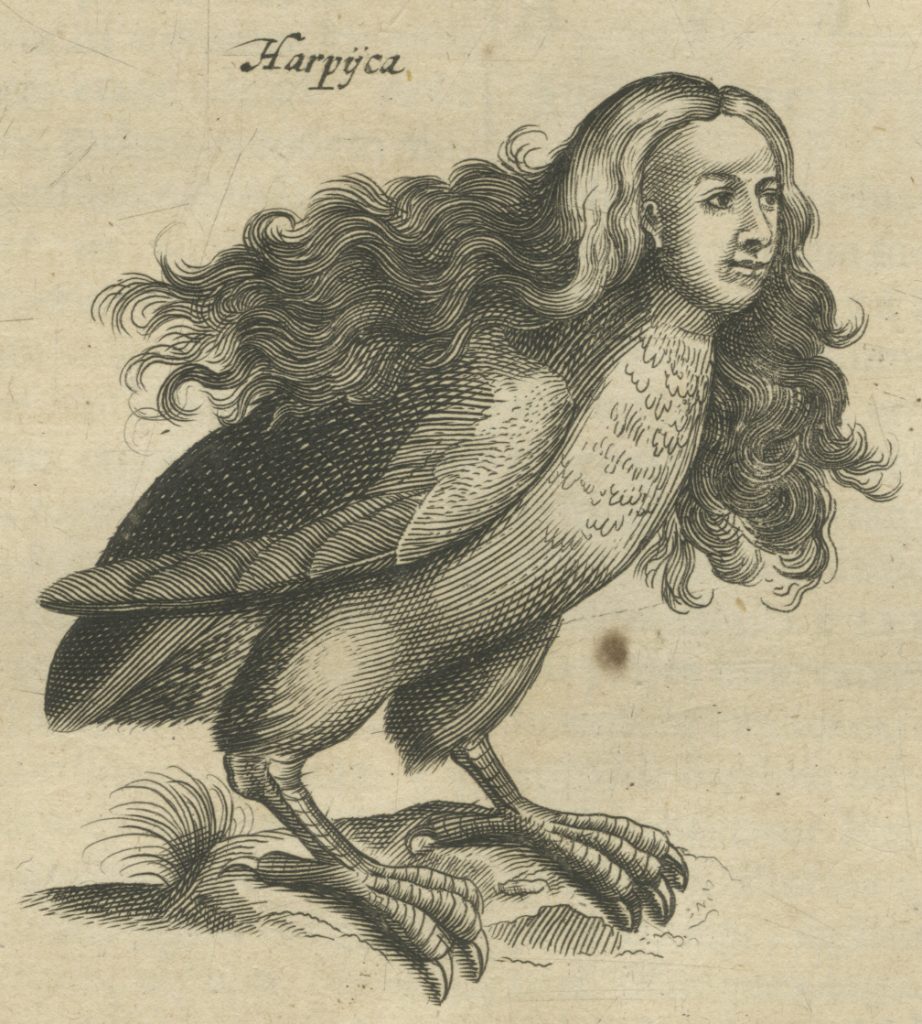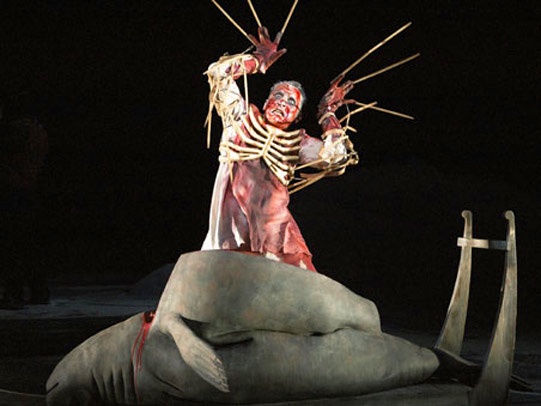Thunder and lightning. Enter ARIEL like a harpy, clapping his wings upon the table, and with a quaint device the banquet vanishes.(3.3.52SD)
And now the problem-solving gets ramped up for stage-management.Thunder and lightning, easy peasy: cue up the thunder sheet or the thunder run and let rip with some fireworks. (The sparks and bangs and flashes and smoke will allow Ariel to make a particularly sudden entrance.) Ariel like a harpy, though. (Do we really need the harpy? Is the harpy fully costed? What would a low-budget harpy look like?) Winged, obviously, and big wings, not polite cupid or fairy stuff. (I am wondering about the potential for repurposing the eagle’s wings from Cymbeline…) Ariel doesn’t have to look like a bird, though; harpies have the faces of women, not beaks. (See below for a seventeenth-century picture of a harpy.) So it might just be a matter of adding wings to Ariel’s existing costume. Talons, perhaps? but the wings are the crucial bit. They might fly in, from the heavens? (Again, the mechanism was there for Cymbeline.) But whatever, they have to jump upon the table, and clap their wings – suggesting that the wings are articulated – this is not a fixed-wing harpy – and perhaps they are attached to the actor’s arms. The best Ariel-as-harpy I have ever seen was in Rupert Goold’s production for the RSC, with Julian Bleach. Notoriously, the production had an Arctic setting, and the banquet was an enormous dead seal on a sledge. The Neapolitans boggled, but had clearly seen enough nature documentaries to be aware of the high calorie value of blubber and seal meat; just at the point when they were about to rip reluctantly in, however, Ariel exploded – it seemed almost literally – out of the seal, covered in blood, with brilliant skeletal harpy wings, which sounded as if they were made of wood, rattling like a macabre xylophone. Pictorial evidence below. It was shocking and weird and frightening, especially the sound. The quaint device of the banquet vanishing is another thing to be solved. In its original form, it was possibly done with a revolving table-top, the banquet being securely fixed to the table and the table constructed so that its top pivoted around a central horizontal axis; a quick spin and the banquet was gone. (This might suggest that the table would need to be quite high, in order to accommodate the height of the banquet laid out on its top.) Smoke and fireworks and a rampaging harpy would distract from any creaking of the mechanism. Even more simply, a tablecloth could be snatched up, or pulled from behind, if the banquet were entirely attached to it – this could be done easily if the table were in front of, or over, the mid-stage trap, so that the banquet could disappear under the stage. But the table, according to a later stage direction, remains. A complicated scene, with potentially bulky devices which would need to be specially constructed and stored. But I guess that by this stage in his career, what Shakespeare wanted, Shakespeare got.




